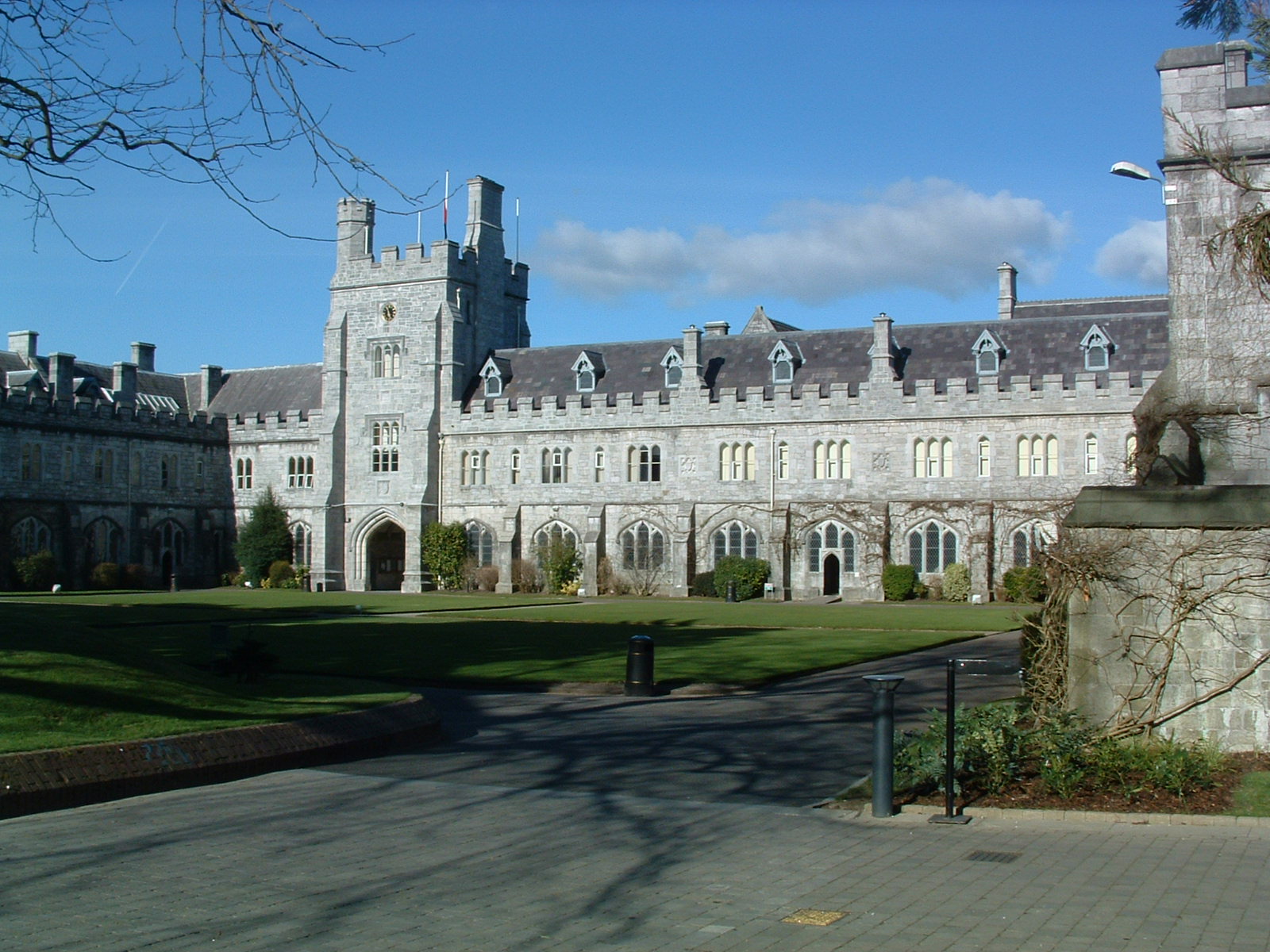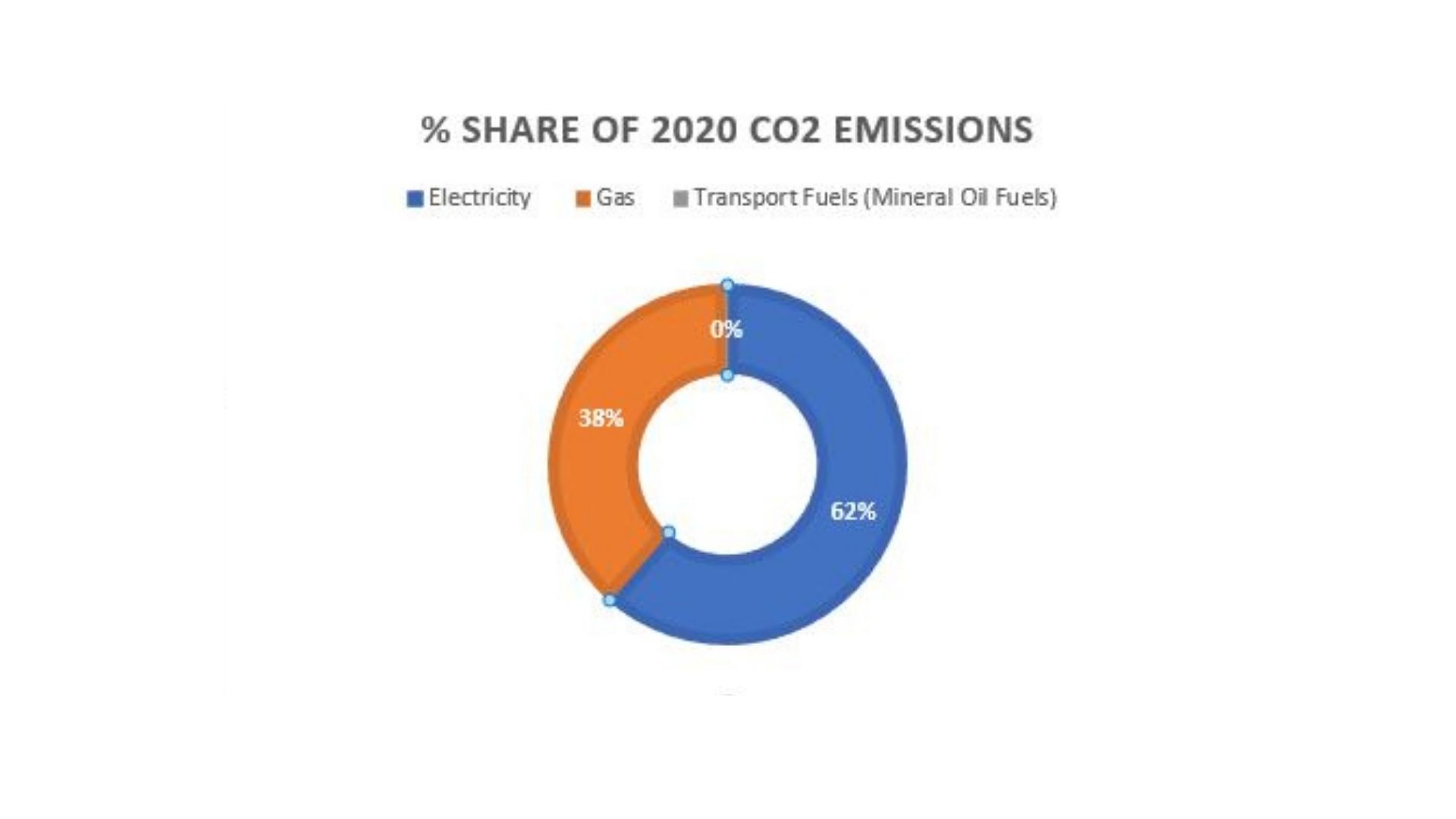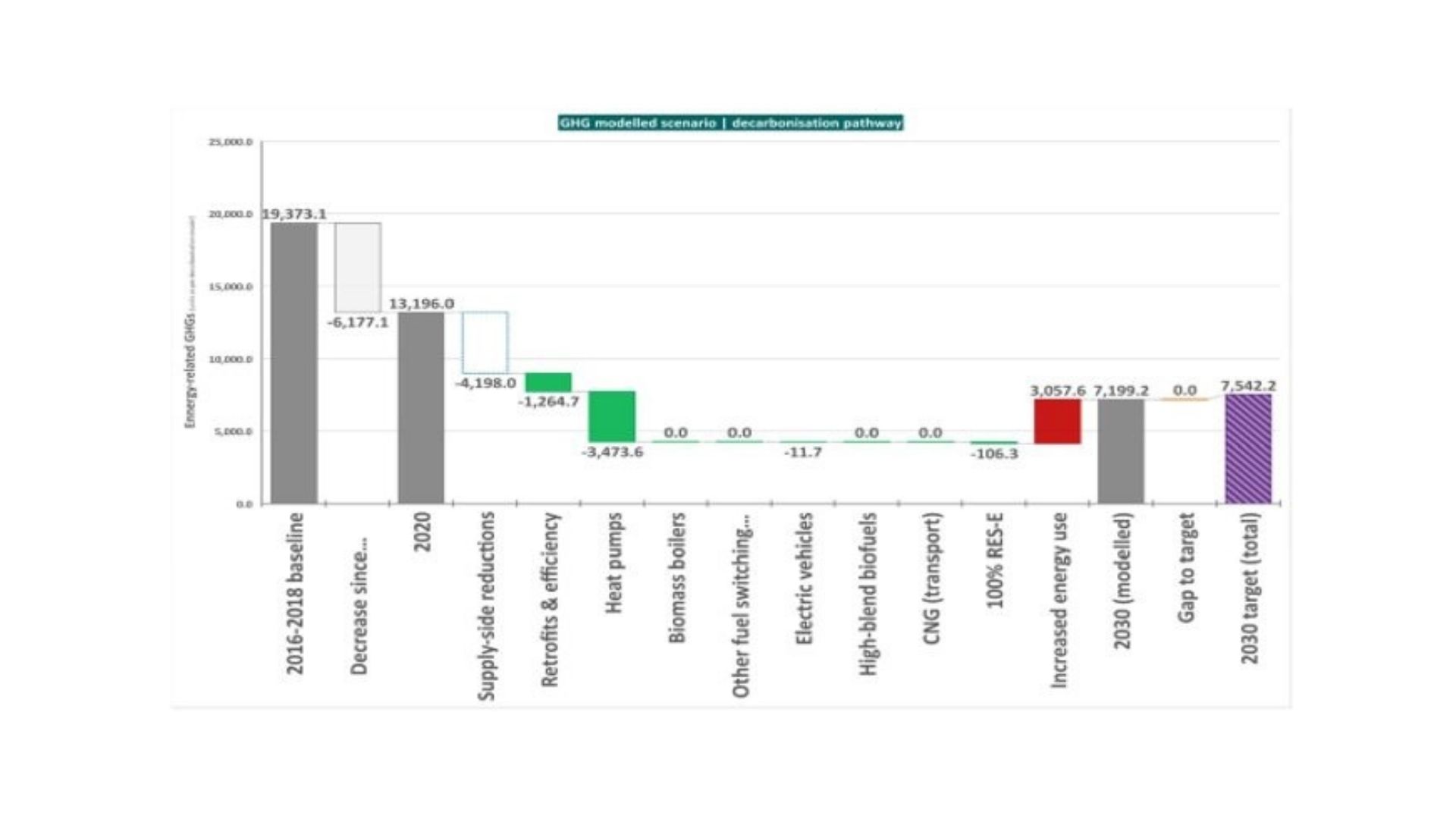- Home
- About
- Student Led
- Research Informed
- Practice Focused
- Resources
- News
- Green Campus Podcasts
- Case Studies
- Green Labs Community
News
Counting our Carbon Emissions to 2030

In the recently published 2021 Annual Report on Public Sector Energy Efficiency Performance, Minister Eamonn Ryan stated that “We have seen excellent progress with a collective 34% energy efficiency improvement achieved by the public sector in the last 11 years, exceeding the target set for 2020.” The 2021 report lists the performance of all individual public sector entities, and we are delighted to report that UCC achieved a 51.5% improvement in energy efficiency, compared to a baseline of 2006-2008.
Readers should be aware that the activity matrix used to calculate our performance was based on the floor area of our University buildings, which increased significantly from the baseline as we added new buildings to the campus , such as the Western Gateway, Tyndall Block C and the Beaufort building to name a few. The report also shows that our CO2 emissions are derived from Electrical use (64.7%) and Gas use (35.1%) with transport accounting for the remaining 0.2%.

Despite the campus footprint increasing by 42% from 2006 to 2020 our overall energy use decreased by 21% and our energy intensity per m2 improved by 41% - An incredible performance by the University and all made possible by the continuous financial support of the University, the SEAI and the HEA. The ongoing technical expertise of our key support departments such as Capital Projects, Engineering Services and Technical Staff along with the continued engagement of students, staff and service contractors were also a key factor in achieving our performance.

2030 Emissions Target
Published in November 2021, the ‘Climate Action Plan 2021, securing our future’ sets out the level of effort and action required to reduce Irelands GHG emissions by 50% by 2030 and to achieve net zero no later than 2050.
Under the action plan the public sector is mandated to achieve a 51% absolute reduction in GHG emissions and a 50% energy efficiency improvement by 2030, against a baseline of 2016 to 2018.
For the University that means our CO2 emissions must reduce from 19,311T to 7,615T, which when converted to kWh, equates to an annual reduction of 23 GWh by 2030. To give readers some scale of the challenge, the same amount of energy reductions required equates to energy consumed on the main campus. Unlike the 2020 target referenced earlier, the 2030 target is based in absolute terms, where the reduction must be achieved, irrespective of the growth plans for the University.
Using the SEAI supplied ‘Gap to Target’ tool the University has identified a route to achieving the 2030 targets while at the same time accounting for the planned growth of the University and can be summarised in 3 key approach's:
Chart showing potential pathway to reducing our GHG emissions by 51% by 2030

Retrofits and Efficiency:
A target to reduce our annual energy use by 2% every year, from 2022 to 2030 through
- Ongoing replacement and retrofitting of building services and equipment to improve efficiency.
- Continuous promotion of good energy behaviours among students, staff and suppliers.
- Continuous optimisation of existing building services.
Heat Pumps:
A target to shift the majority of our heating systems over the next 8 years from gas powered to electrically fed heat pumps by:
- Installation of low temperature heat pumps across 4 buildings.
- Installation of high temperature heat pumps across 13 buildings.
The University has already begun the transition to heat pumps, with the aid of the funding from the HEA, under the 2020 Pathfinder program.
On site Renewables.
A target to avoid 105 T/CO2 through the generation of onsite electricity over the next 8 years through the installation of more PV arrays.
Next Steps
With only 8 years left to hit our 2030 targets the B&E office are already developing plans to prioritise the buildings that can be (1) converted to heat pump technology without significant fabric upgrades and (2) where the existing heating systems are near or past the end of their useful life and (3) Availability/ routes to finance.
A number of buildings have been identified as suitable for roof PV arrays and tenders are expected to be issued in the coming months for a ‘pay as you generate service’ model.
We will continue to update the University community on our progress to 2030 and the status of the projects that can get us there.
Should you have any comments, observations or suggestions please do get in contact as we cannot achieve the targets without your knowledge and help.
Chat Soon.
Pat Mehigan, UCC Energy Manager
Useful links:
https://www.gov.ie/en/publication/6223e-climate-action-plan-2021
https://www.seai.ie/publications/Public-Sector-Annual-Report-2021.pdf
https://psmr.seai.ie/public to check the performance of any public sector organisation.
Briefing to PBs on CAP 2021 can be viewed at Public body briefing on CAP 2021building register reporting requirements for M&R reporting
